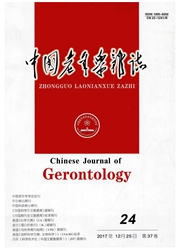

 中文摘要:
中文摘要:
目的探讨地理环境因素纳入左心室Tei指数正常参考值制定的考量范围内及分析其对健康人左室Tei指数参考值的影响。方法选取地形、气候、土壤3大类25项地理环境指标与健康人左心室Tei指数进行相关分析,选取有显著相关的9项指标参与多层感知器与RBF网络建模,通过学习训练加强预测精度建立模型,与未参与建模的实测值对比,基于多层感知器模型的预测值与实测值拟合效果较好,在95%的置信度下,二者无显著差异。通过对数据的正态性检验分析,选取析取克里金插值法内插出基于多层感知器模型预测的中国健康人左心室Tei指数参考值的地理分布图,拟合参考值的三维空间趋势图并分析环境对指标的影响机制。结果左心室Tei指数与纬度,年平均气温,年降水量,气温年较差,年平均风速,表土粉土阳离子交换量,表土Ca SO4含量,表土碱度,表土盐分有显著相关性,基于多层感知器模型的预测值分布趋势由北向南依次递减,自西向东先减小后增大。结论综合生理因素和地理环境因素对参考值的影响,能够更加科学地确定参考值的分布。
 英文摘要:
英文摘要:
Objective To analyze the relationship between geographical environment factors and the left ventricular Tei index,ex-plore the distribution of Tei reference values of different geographic environment, and provide a scientific basis for clinical examination. Methods 25 geographical factors and left ventricle Tei index were selected to extract 9 geographical factors which had significant correlation for building the multilayer perceptron model and radial-basis function model respectively.The prediction precision of the model was strength-ened by training and learning,the multilayer perceptron model fitting was better than radial-basis function for the comparison between predic-ted values and measured values that were not participate in the modeling.Through the test of normality for the predicted values based on the multilayer perceptron model ,the interpolation method of disjunctive kriging was chosen to make the geographical distribution of left ventricle Tei index and matched the trend analysis diagram,in addition,analyze the influence mechanism of geographical environment factors and left ventricle Tei index.Results There were significant correlations between left ventricle Tei index and latitude,the annual average temperature, annual precipitation, annual temperature range,the annual average wind speed, soil cation exchange capacity( slit) , calcium sulfate content in topsoil,alkalinity in topsoil,salinity in topsoil.The predictive values based on the multilayer perceptron model were decreased from north to south,decreased first and then increased from west to east.Conclusions It could be more scientific to formulate the left ventricle Tei in-dex distribution on the basis of synthesizing the physiological factors and the geographical environment factors.
 同期刊论文项目
同期刊论文项目
 同项目期刊论文
同项目期刊论文
 期刊信息
期刊信息
